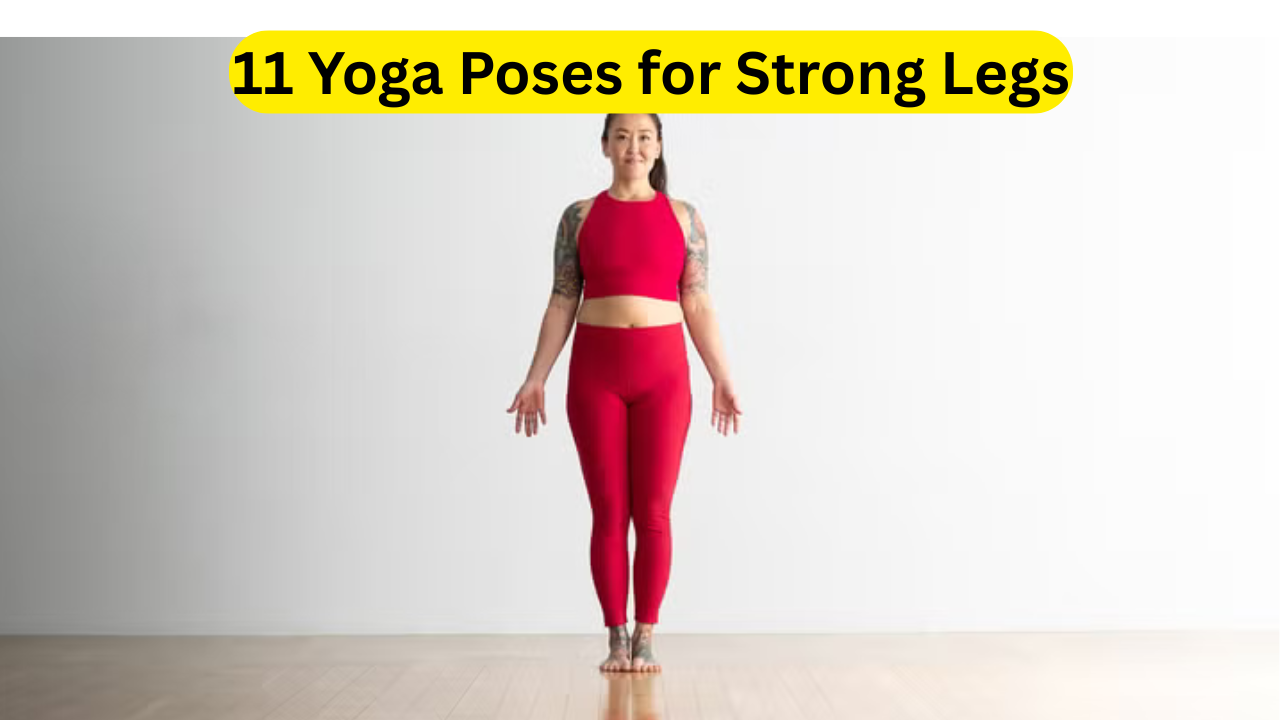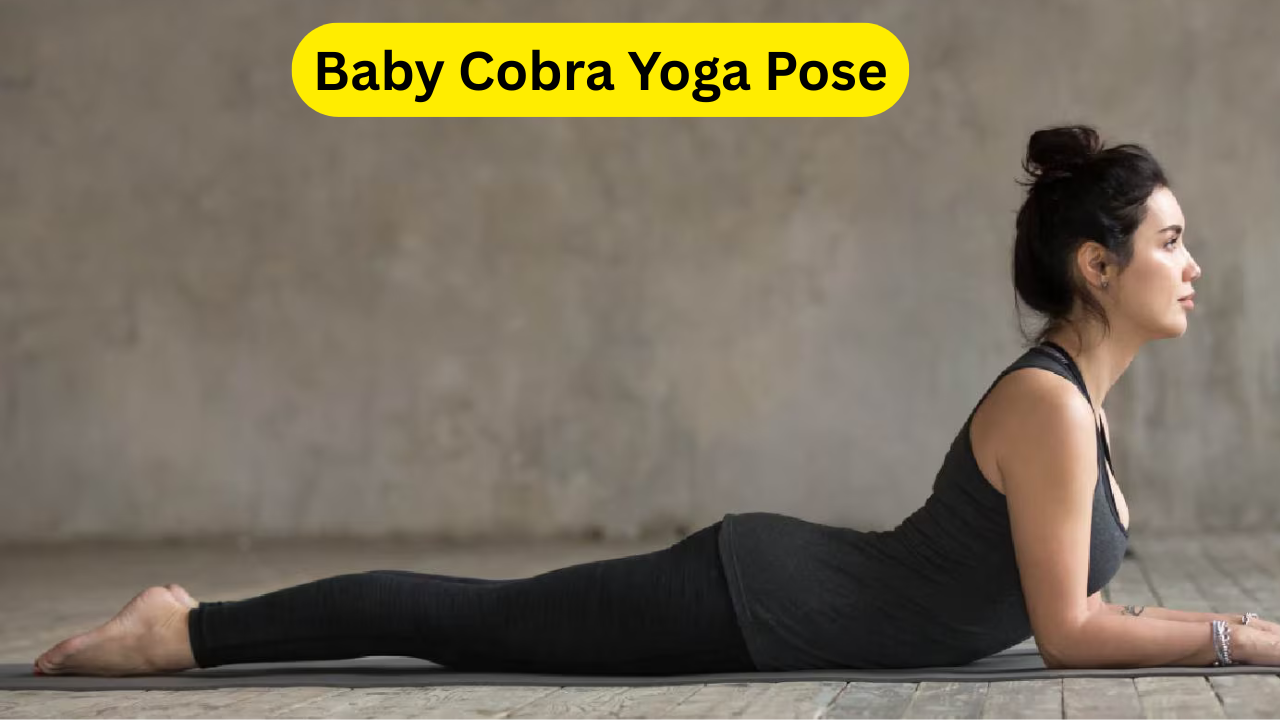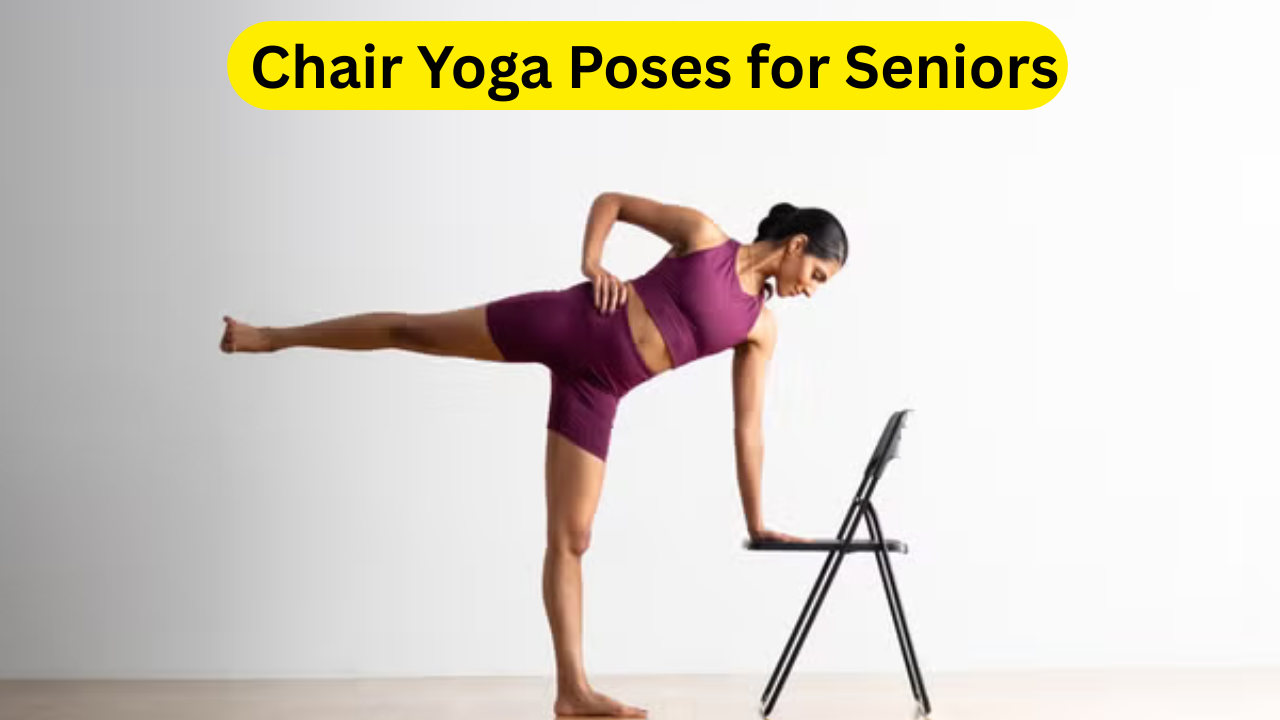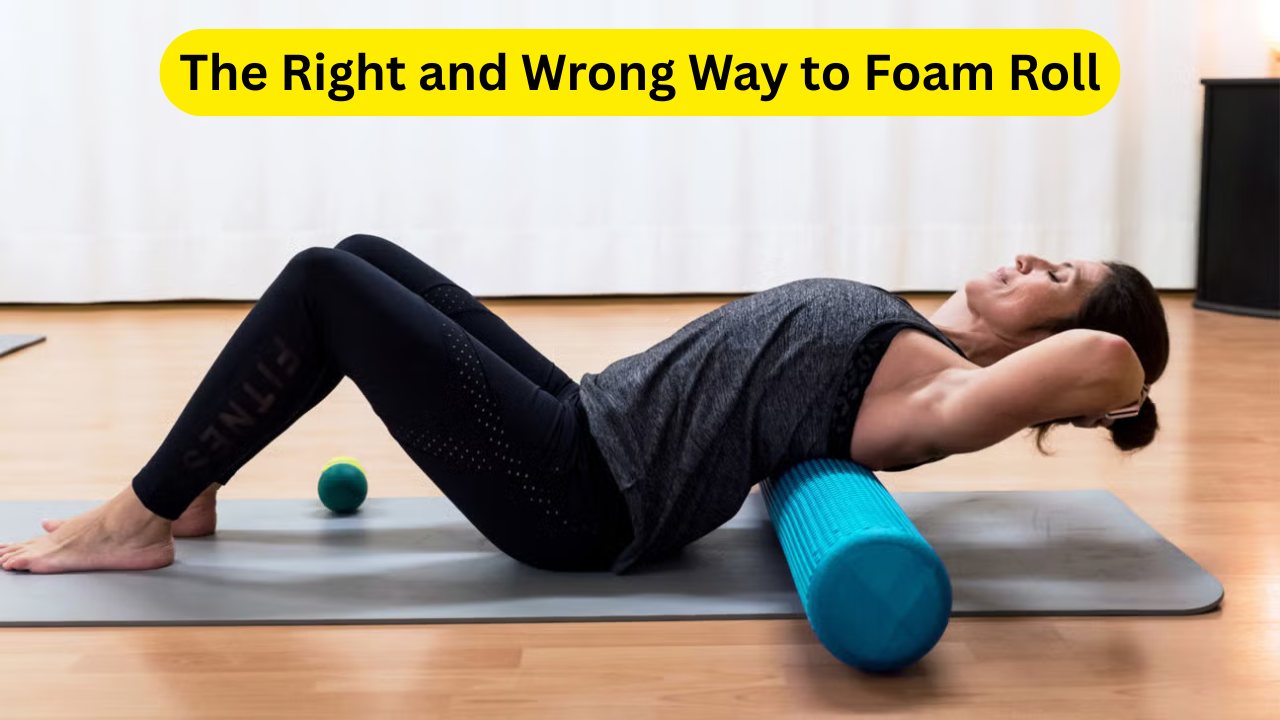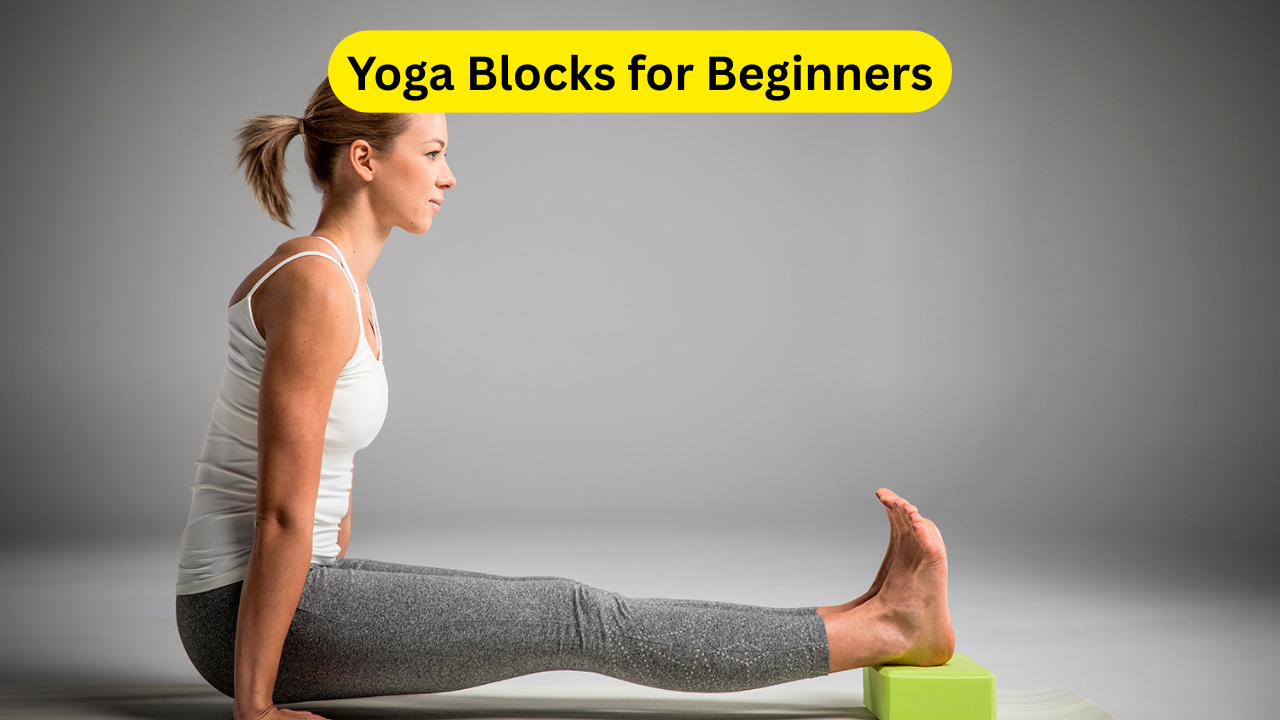11 Yoga Poses for Strong Legs: When it comes to daily activities like standing, walking, running, hiking, and biking, strong legs play a crucial role. They carry you through various physical challenges, providing the endurance and balance necessary for performance. However, building strength isn’t just about lifting heavy weights or running long distances. The true secret to strong legs lies in finding a balance between muscle strength and flexibility, which yoga can provide. Yoga works wonders for enhancing the strength of your legs while improving their flexibility, coordination, and balance. This is especially important since flexibility complements strength by reducing the risk of injury and increasing range of motion.
Many yoga poses specifically target the muscles of the legs, glutes, hips, knees, and ankles. These muscles all work together to support your lower body, and yoga strengthens them with a combination of stretching, balancing, and holding poses. From the beginner-friendly Mountain Pose to the more challenging Pyramid Pose, yoga offers a range of postures that can activate and tone the entire lower body. Poses like Extended-Hand-to-Big-Toe Pose and Warrior III challenge your balance and stability, while also stretching and strengthening the legs, making them more functional and powerful.
Incorporating these yoga poses into your routine can help you improve not only your leg strength but also your overall fitness, posture, and mental clarity. Here are 11 yoga poses that will build strong legs, enhance your flexibility, and provide a solid foundation for daily physical activities. Whether you’re an athlete or someone looking to improve leg strength for everyday tasks, yoga is a great practice to add to your fitness routine.
1. Mountain Pose (Tadasana)
How to Perform:
Mountain Pose is the foundation of many yoga sequences and an excellent way to start warming up the body. Stand tall with your feet hip-width apart and press them firmly into the mat. Ensure your shoulders are away from your ears, and your spine is long and straight. By lifting onto the balls of your feet and lowering back down several times, you activate your ankles and feet, warming up the entire lower body.
Benefits:
Mountain Pose strengthens the legs, especially the calves and thighs. It also helps improve posture and balance, setting a strong foundation for other poses.
2. Chair Pose (Utkatasana)
How to Perform:
Start by standing tall with your feet together. On an inhale, reach your arms overhead. As you exhale, bend your knees and lower your hips as if sitting in an imaginary chair. Keep your feet grounded and your chest lifted. For an added challenge, place a block between your thighs and squeeze it to engage the adductors.
Benefits:
Chair Pose activates the quadriceps, glutes, and calves. It strengthens the entire lower body and is especially beneficial for improving balance and stability.
3. Pyramid Pose (Parsvottanasana)
How to Perform:
Start standing tall at the top of your mat. Step your left foot back 2 to 4 feet, keeping your hips facing forward. On an inhale, lengthen your spine, and as you exhale, hinge forward from your hips, bringing your chest toward your front thigh. Place your hands on blocks or the floor.
Benefits:
Pyramid Pose targets the hamstrings, quadriceps, and hips. It stretches the hamstrings while also strengthening the quads and core for better stability and balance.
4. Extended Hand-to-Big-Toe Pose (Utthita Hasta Padangusthasana)
How to Perform:
Shift your weight onto one leg and lift the opposite leg, holding your big toe with your hand. Keep your chest open, your standing leg straight, and extend the lifted leg forward. Hold the pose for 20-30 seconds.
Benefits:
This pose improves balance while strengthening the quads and stretching the hamstrings. It also helps improve flexibility in the hips and hamstrings.
5. Tree Pose (Vrksasana)
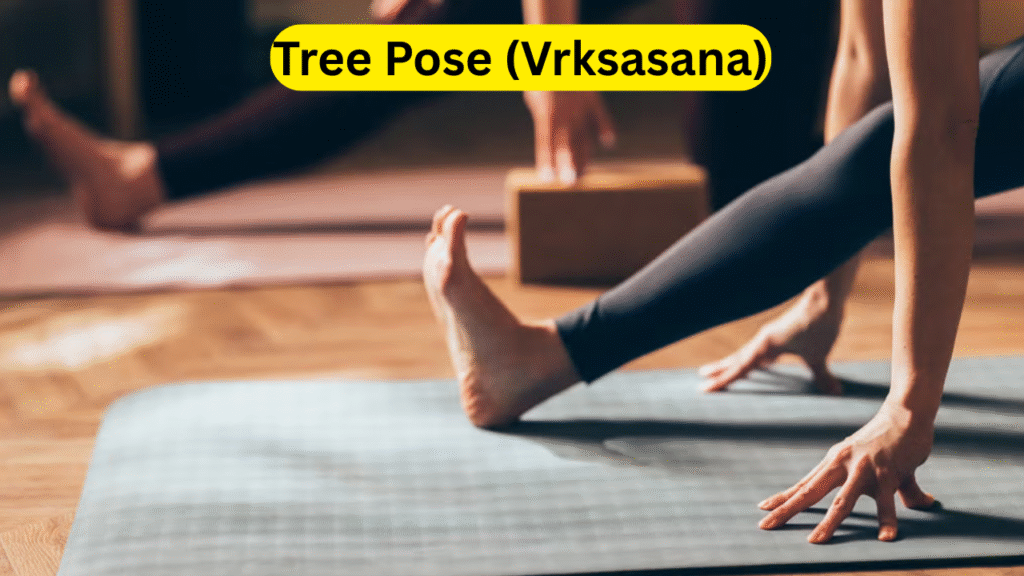
How to Perform:
Stand tall with your feet firmly planted. Shift your weight onto one leg and place the sole of the other foot against the inner thigh or calf of the standing leg. Bring your palms together in prayer position or extend your arms overhead.
Benefits:
Tree Pose strengthens the legs and improves balance. It stretches the inner thighs and strengthens the ankles and feet.
6. High Lunge
How to Perform:
Step one leg back into a lunge position, ensuring the front knee is bent at a 90-degree angle. Reach your arms overhead, keeping your spine long. Activate the muscles in your front leg to hold the lunge, while the back leg stretches.
Benefits:
High Lunge strengthens the quadriceps, glutes, and hip flexors, while also stretching the back leg’s hamstrings and hip flexors.
7. Warrior III (Virabhadrasana III)
How to Perform:
From High Lunge, shift your weight onto your front leg and extend your arms forward, balancing on one leg as you raise the back leg parallel to the floor. Engage your core and maintain a straight line from head to heel.
Benefits:
Warrior III strengthens the standing leg, calves, and ankles while also improving balance and core stability.
8. Standing Split (Urdhva Prasarita Eka Padasana)
How to Perform:
Start in a High Lunge, then shift your weight onto the front leg as you lift your back leg toward the ceiling. Keep a slight bend in the standing leg and use your arms to support your balance.
Benefits:
This pose enhances flexibility in the hamstrings and strengthens the standing leg, while improving overall balance.
9. Bridge Pose (Setu Bandha Sarvangasana)
How to Perform:
Lie on your back with knees bent and feet flat on the floor. Press your feet into the mat as you lift your hips toward the ceiling, squeezing your glutes and engaging your core. You can clasp your hands underneath your back for more stability.
Benefits:
Bridge Pose strengthens the glutes, hamstrings, and lower back. It also stretches the hip flexors and provides a gentle backbend.
10. Half Splits
How to Perform:
From Downward-Facing Dog, step one foot forward and lower the opposite knee to the floor. Straighten the front leg and fold forward, feeling a deep stretch in the hamstrings.
Benefits:
Half Splits target the hamstrings and calves, providing a deep stretch while helping to improve flexibility in the lower body.
11. Legs Up the Wall (Viparita Karani)
How to Perform:
Sit with one hip against a wall, then swing your legs up to rest against it. Keep your body relaxed, with your arms by your sides and palms facing up. Hold this position for 5-10 minutes.
Benefits:
This restorative pose helps relax the legs after a strong yoga session, relieving tension in the calves, hamstrings, and glutes.
Also Read: Lip Care Routine: Expert Tips for Soft, Smooth, and Healthy Lips 2025
11 Yoga Poses for Strong Legs Conclusion
Yoga offers an incredibly effective and balanced approach to building leg strength. Through its focus on balance, flexibility, and strength, yoga allows for the development of not just strong muscles but also a body that moves more efficiently and with less risk of injury. Each pose targets specific muscle groups, ensuring that every part of the leg, from the calves to the thighs to the glutes, is strengthened and stretched.
Incorporating these 11 yoga poses into your daily routine can make a significant difference in your overall leg strength. They not only target the major muscles but also enhance mobility, flexibility, and stability in your lower body. This can improve your performance in other physical activities like running, biking, and hiking.
Moreover, practicing these poses regularly can help prevent injuries that commonly affect the legs, such as strains and sprains, by increasing both flexibility and muscle endurance. Whether you’re a seasoned athlete or someone new to yoga, these poses are adaptable to different levels and can help you achieve the strong, flexible legs you desire.
Yoga for leg strength also benefits the mind, fostering greater focus, mindfulness, and mental resilience. As you work through these poses, you’ll not only feel the physical benefits but also develop a deeper connection between your body and mind.
In conclusion, yoga is an excellent way to complement your fitness routine and build strong, resilient legs. By focusing on both strength and flexibility, you’ll ensure that your lower body stays balanced and capable of handling any physical challenge.
11 Yoga Poses for Strong Legs FAQs
1. How often should I practice these yoga poses to strengthen my legs?
To see noticeable improvements, practice these poses at least 3-4 times a week. Consistency is key to building strength and flexibility over time.
2. Can these yoga poses help with knee pain?
Yes, many of these poses, particularly Tree Pose and High Lunge, can help strengthen the muscles around the knees, providing better support and reducing the risk of knee pain. However, consult with a healthcare professional if you have serious knee injuries.
3. Are these poses suitable for beginners?
Yes, many of these poses can be modified to suit beginners. Using props like blocks and straps can help make the poses more accessible while still providing the benefits.
4. What if I cannot hold these poses for long periods?
That’s okay! Start by holding each pose for a few breaths, and gradually increase the time as your strength and flexibility improve. Focus on form and alignment first.
5. How do these yoga poses compare to traditional leg-strengthening exercises?
While traditional exercises like squats and lunges are great for targeting leg muscles, yoga incorporates strength, flexibility, and balance, which provides a more holistic approach to building strong legs. Yoga also helps to improve overall mobility, which can complement other forms of exercise.
